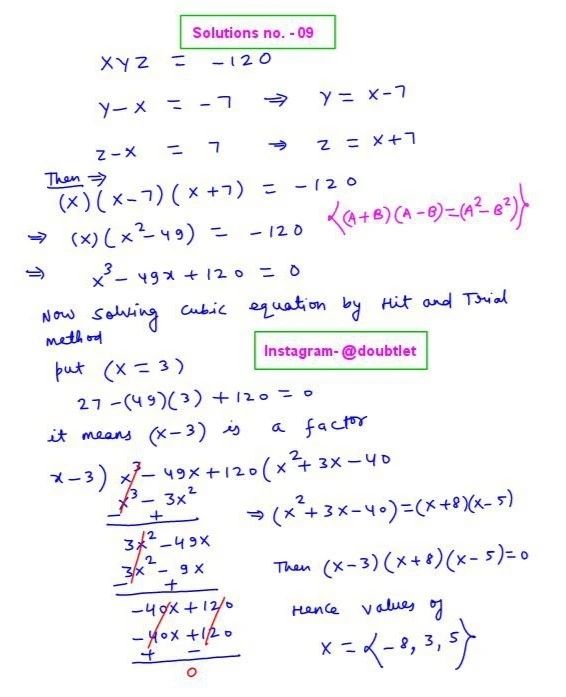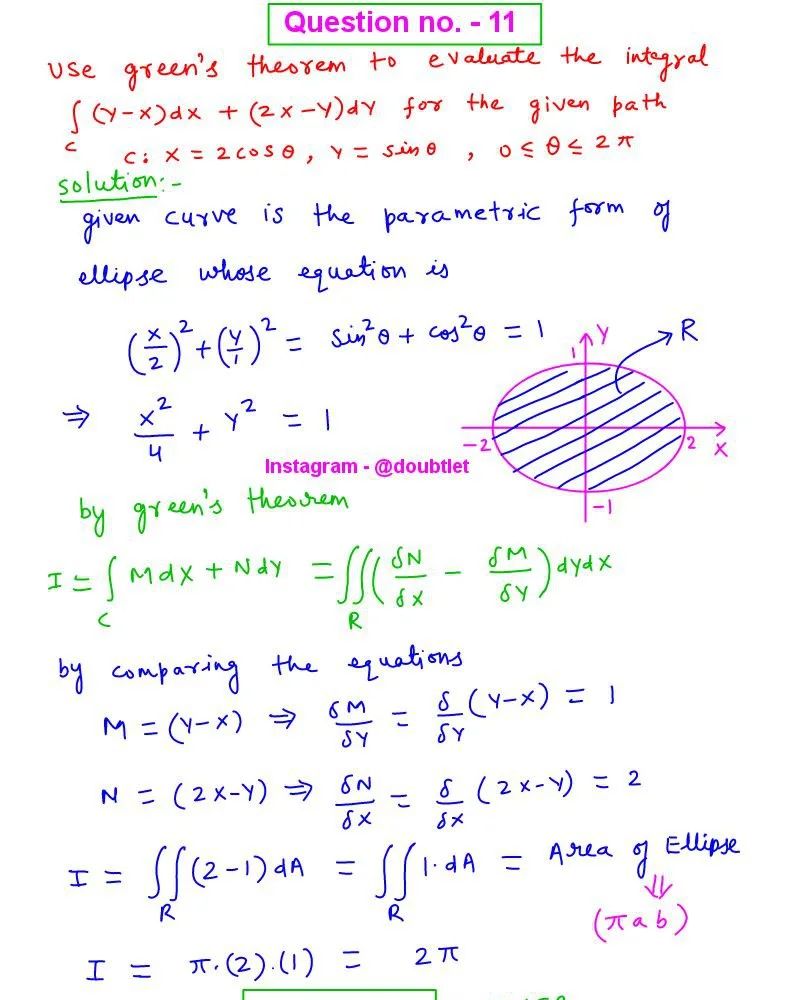









Question :
Evaluate the given integral by changing to polar coordinates: where is the region that lies to the left of the -axis between the circles and .

Solution:

Neetesh Kumar | November 28, 2024
Calculus Homework Help
This is the solution to Math 1D
Assignment: 15.3 Question Number 2
Contact me if you need help with Homework, Assignments, Tutoring Sessions, or Exams for STEM subjects.
You can see our Testimonials or Vouches from here of the previous works I have done.
Step-by-step solution:
Step 1: Understanding the Problem
We are asked to evaluate the double integral over a region , which is bounded by two circles:
- (radius 1),
- (radius 4).
The region lies to the left of the -axis, meaning the bounds for are restricted to negative values (i.e., ).
The function to integrate is , and we will convert this integral into polar coordinates.
Step 2: Converting to Polar Coordinates
In polar coordinates, the transformations are:
- ,
- ,
- The differential area element .
Also, the given function becomes:
Step 3: Determining the Limits of Integration
The region is the area inside the annulus between the circles and , and to the left of the -axis. In polar coordinates:
- The radius ranges from to (since and the circles are defined by radii 1 and 4).
- The angle ranges from to because we are only considering the left half of the plane, where .
Thus, the limits are:
- ,
- .
Step 4: Setting up the Integral in Polar Coordinates
Now that we have the transformations and limits, we can write the integral as:
This simplifies to:
Step 5: Evaluating the Inner Integral
First, evaluate the inner integral with respect to :
Since is independent of , we can treat it as a constant during integration. The integral of is:
Now, evaluate this from to :
Thus, the inner integral becomes:
Step 6: Evaluating the Outer Integral
Now, evaluate the outer integral with respect to :
We can break this up into two integrals:
- Evaluating :
Evaluating this from to :
- Evaluating :
Evaluating this from to :
Thus, the total integral becomes:
Final Answer:
The value of the integral is:
Please comment below if you find any error in this solution.
If this solution helps, then please share this with your friends.
Please subscribe to my Youtube channel for video solutions to similar questions.
Keep Smiling :-)
Comments(0)



Leave a comment